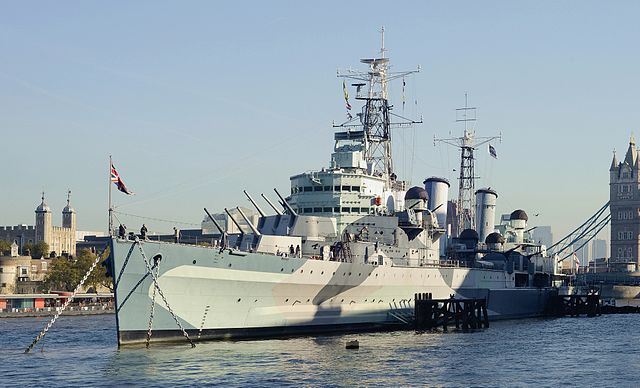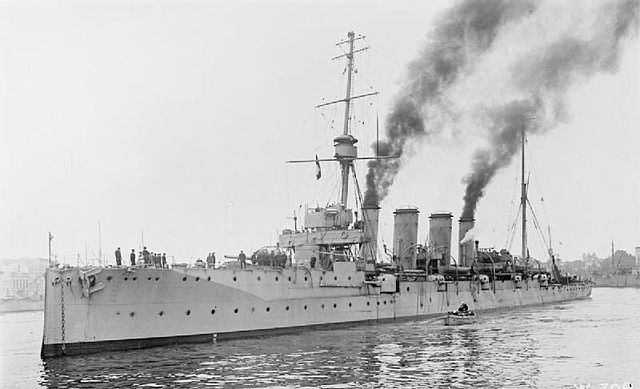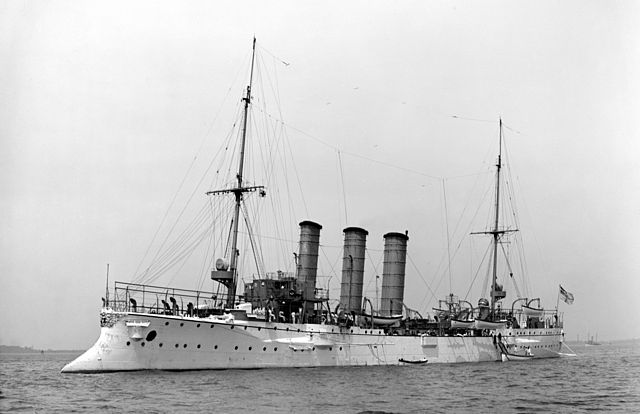The Karlsruhe class of light cruisers was a pair of two ships built for the German Imperial Navy before the start of World War I. The ships—SMS Karlsruhe and Rostock—were very similar to the previous Magdeburg-class cruisers, mounting the same armament and similar armor protection, though they were larger and faster than the earlier ships. Both vessels were laid down in 1911, and launched one day apart, on 11 and 12 November 1912. Karlsruhe joined the fleet in January 1914, but fitting out work lasted slightly longer on her sister; Rostock was commissioned the following month.
SMS Karlsruhe
Karlsruhe coaling in San Juan
Rostock
A light cruiser is a type of small or medium-sized warship. The term is a shortening of the phrase "light armored cruiser", describing a small ship that carried armor in the same way as an armored cruiser: a protective belt and deck. Prior to this smaller cruisers had been of the protected cruiser model, possessing armored decks only. While lighter and smaller than other contemporary ships they were still true cruisers, retaining the extended radius of action and self-sufficiency to act independently around the world. Cruisers mounting larger guns and heavier armor relative to most light cruisers would come to be known as heavy cruisers, though the designation of 'light' versus 'heavy' cruisers would vary somewhat between navies. Through their history light cruisers served in a variety of roles, primarily as convoy escorts and destroyer command ships, but also as scouts and fleet support vessels for battle fleets.

HMS Belfast, one of the last surviving light cruisers. She carries 12 6-inch guns and displaces 11,553 tons – "light" in World War II referred to gun size, not displacement.
HMS Mercury
HMS Gloucester, one of the Town class, in 1917
SMS Bremen







